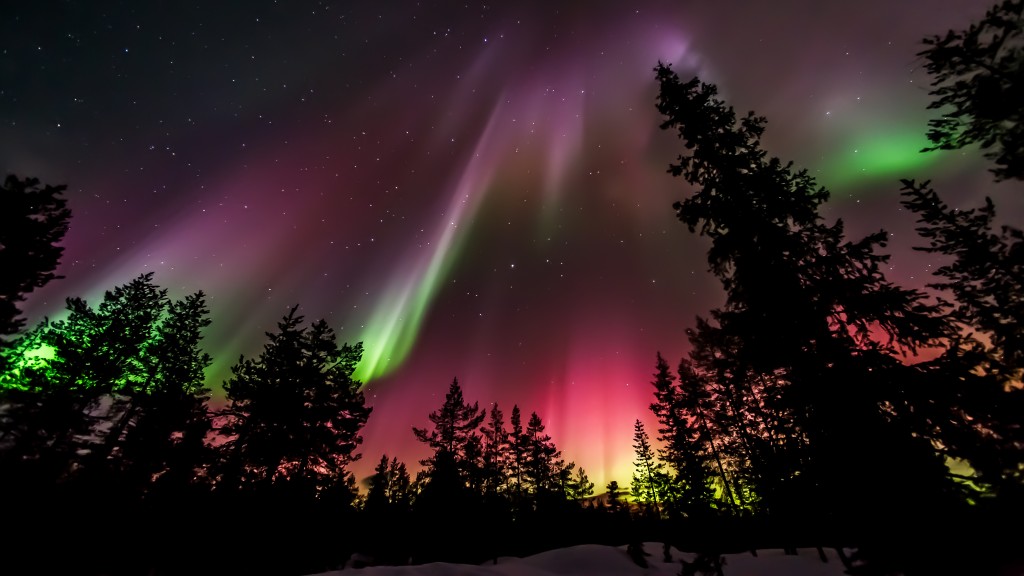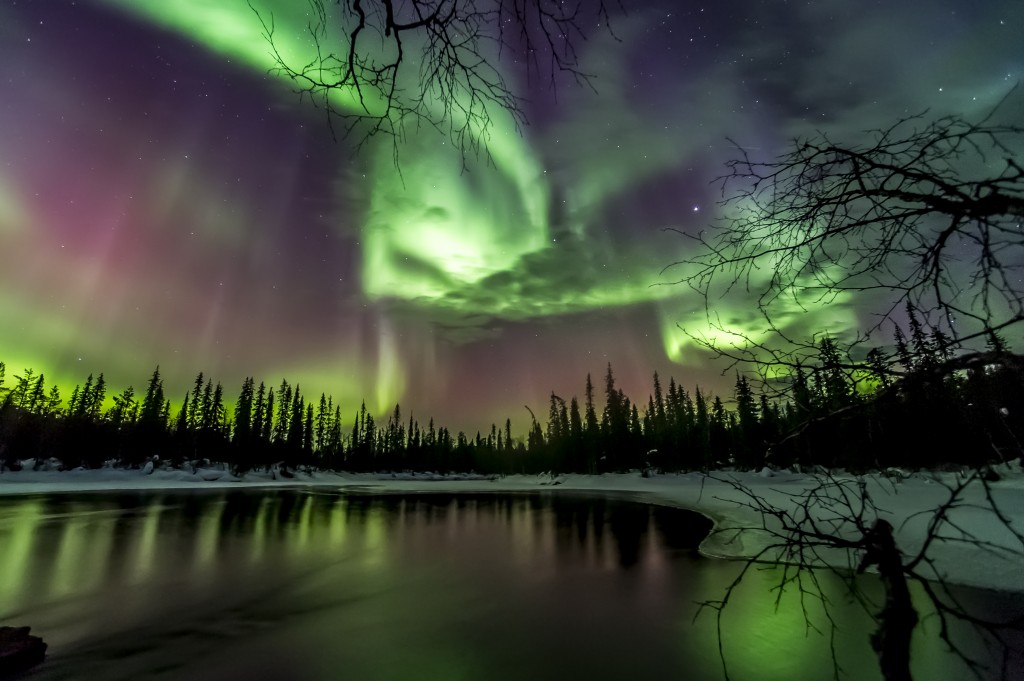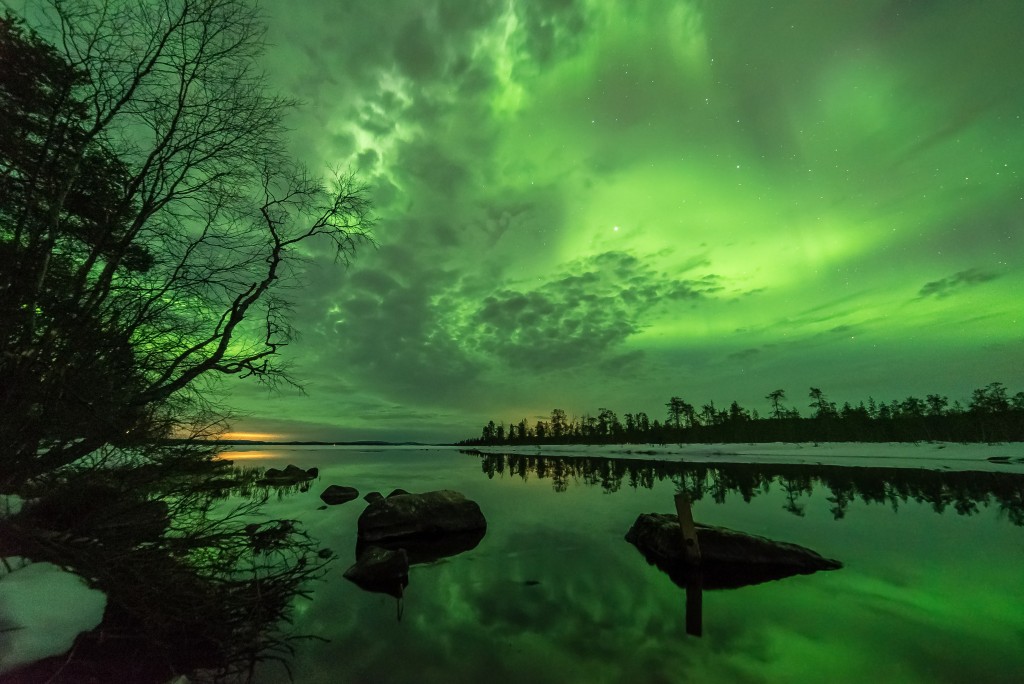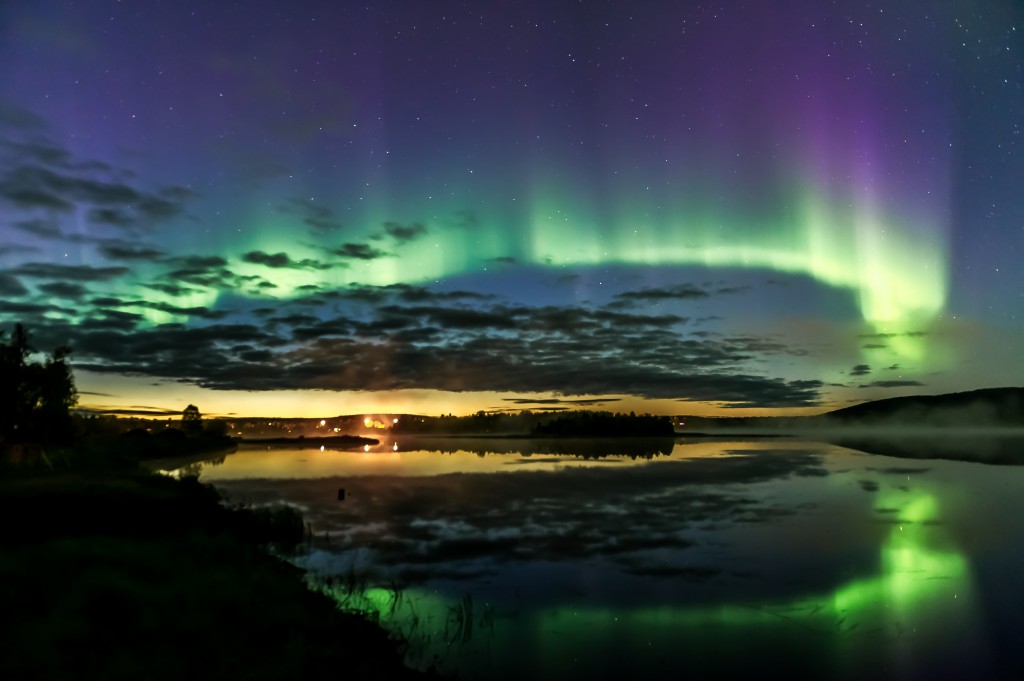Aurora Tourism in Finland
One of the most enduring memories visitors to Finland take back home is that of having seen the spectral beauty of the aurora borealis, or Northern Lights. Every year thousands of tourists arrive in Lapland to take advantage of the fact that this amazing spectacle is visible for around 200 nights of the year. Indeed, such is the allure of the aurora that in the Saariselkä fell region, next to Urho Kekkonen National Park, Hotel Kakslauttanen now provides accommodation in glass igloos! These igloos are constructed of a special thermal glass that not only maintains an even warmth inside, but prevents frosting of the glass to ensure a constantly clear view of the heavens above. The Finns are nothing if not innovative!
The Northern Lights in Folk Legends

Here in Finland, the aurora borealis are known as “Revontulet”. The literal meaning of this is ‘foxes fire’, which refers to a Sámi legend that the aurora was caused by a fox racing over the snowy fells, its tail brushing the snowdrifts and sending trails of sparks into the sky. An old Finnish legend has it that the aurora is caused by Thor heaving bolts of lightning at Väinämöinen, the great hero of the national epic “The Kalevala”. In other parts of the world, people of the north have at times believed the aurora was the blood of the dead which ran freely when the great spirits rode horses in the afterlife. It’s fair to say that in virtually every culture which experienced these wonders a myth to explain them existed. The name ‘aurora borealis‘ was given by the French astronomer (and mathematician, and philosopher, and scientific observer, and also priest!) Pierre Gassendi in 1621, named after ‘Aurora’ the Roman goddess of dawn, and ‘Boreas’ the Greek name for the north wind.
The Science of the Northern Lights
Over the centuries there have been countless theories put forward to explain the aurora borealis, some of them more incredible than others. Scientists today believe they can accurately describe how the auroras occur, thanks in no small part to the great technological leaps of the last 40 years or so. At the heart of the aurora mystery is our Sun whose surface is a seething mess of thermonuclear activity, occasionally exploding with solar flares. These flares cause the solar storms and winds that are constantly streaming at out planet. Fortunately for all life on earth, the planet has a strong magnetic core, and the magnetic fields it creates protect us from the solar winds. Otherwise life as we know it could not exist here. However, at the earth’s magnetic poles it gets interesting, as the electrons blown by the solar winds interact with molecules in the earth’s ionosphere. What we see is the result of photons being emitted from ionized nitrogen atoms regaining an electron, and from both oxygen and nitrogen atoms shifting from excited to ground states. Oxygen produces mostly green and white light, while nitrogen emits pink light.

How the auroras appear depends considerably on the location of the observer. For example, when near the magnetic pole the auroras will appear to be high overhead, but from further away they appear to illuminate the horizon, often appearing to spill down towards it. They often display magnetic field lines or as curtains of light, and are unpredictable, sometimes changing in seconds and at other times remaining unchanged for lengthy periods.
The Best Locations in Finland to view the Northern Lights
Although it is possible to see the aurora borealis in Southern Finland, there is the matter of light pollution and it can be hard to find an area sufficiently far from large towns or cities that permits good sightings. This is most definitely not the case in Lapland, one of the most sparsely populated parts of Europe. Statistically, the best area is the Kilpisjärvi region where they occur on at least 200 nights of the year.
As you would expect, winter in Lapland offers the best opportunities for enjoying this incredible spectacle, thanks to the long, long nights. For reasons I personally don’t fully understand yet, the equinoxes are the times when there is the most activity, so although the dead of winter is good there are peaks from September through October and March through April. In the Kilpisjärvi region during the darkest period of winter the auroras can be seen 3 nights out of every 4 on average. Further north, at Utsjoki for example, there is a decrease of 10%, and likewise as you travel further south the incidence also decreases. In the Sodankylä region you can see the auroras every second night on average, and in the Oulu-Kuusamo region every fourth night.

The best time of the night to see the Northern Lights is usually between 9pm and 11.30pm when they peak. This is due to the magnetic midnight and the fact that the disturbances in the Earth’s magnetic field are at a maximum. After midnight the incidence of the lights begins to diminish, and by 4am to 5am the probablity of occurrence falls below 50%.
Photographs used by kind permission of Visit Finland © MEK Finnish Tourist Board



